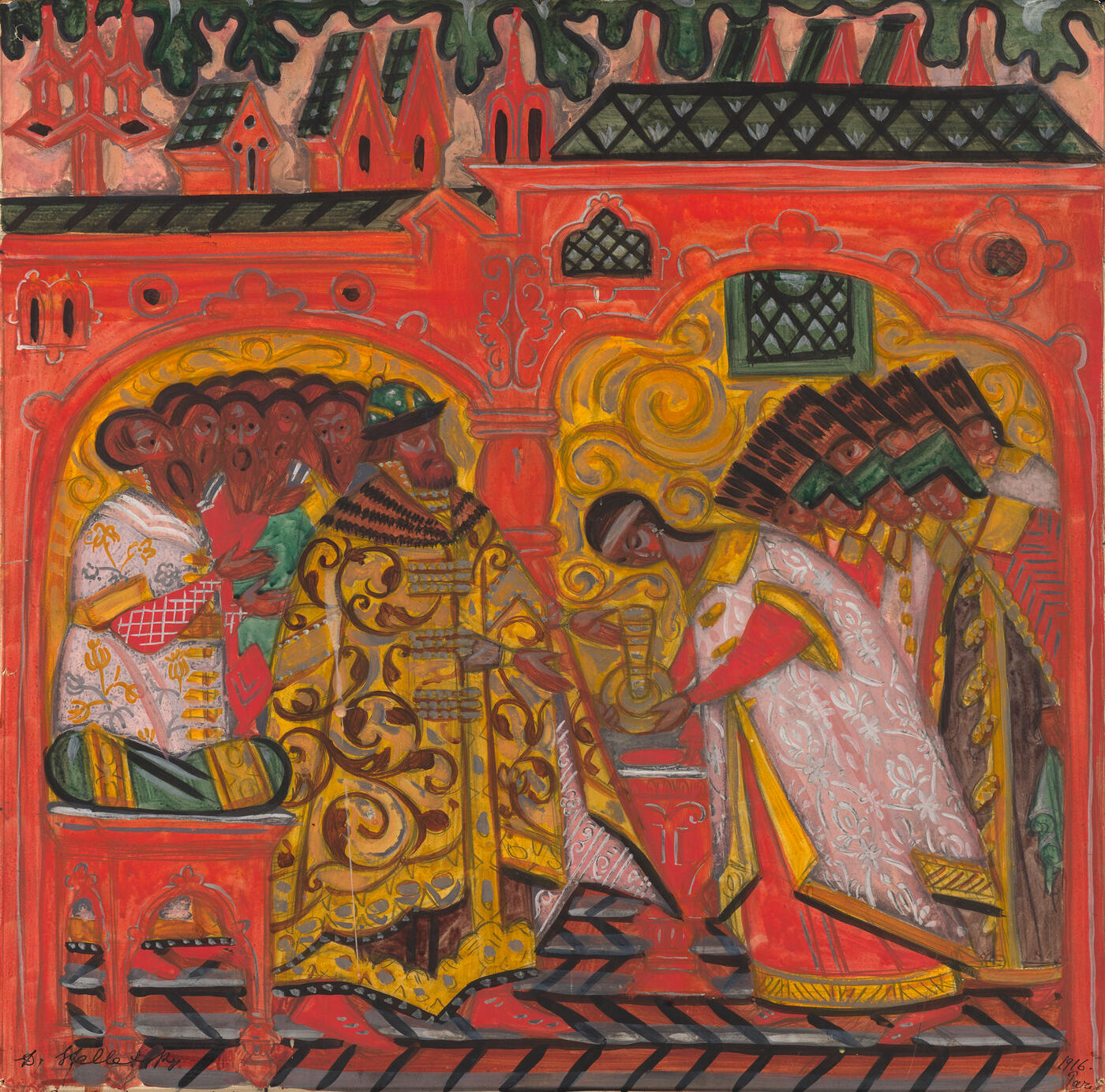29 November 2017 Russian Art Auctions
29 November 2017

47. STELLETSKY, DMITRI (1875-1947)
Betrothal of the Tsar Alexei Mikhailovich and Natalia Naryshkina, signed, inscribed "Paris" and in Cyrillic "Eskiz", and dated 1916.
Pencil and gouache on paper, laid on cardboard, 52 by 52.5 cm.
40,000-60,000 GBP
Provenance: Collection of Count Kirill and Countess Vera Naryshkin (label on the backing cardboard).
Important private collection, Europe.
The two works offered for auction, The Betrothal of Tsar Alexei Mikhailovich and Natalia Naryshkina and Procession of the Cross in Celebration of the Birth of Peter the Great, were painted by Dmitri Stelletsky to the commission of Countess Vera Naryshkin (1883–1963) for her husband Kirill Vasilievich (1877–1950), who was a descendant of Natalia Naryshkin, the mother of Peter the Great. The Countess wished to obtain a series of decorative panels, illustrating principal events in the history of the Naryshkin family. It is not known for certain how many scenes the artist intended to execute, but the present works undoubtedly had paramount importance in the cycle. They show events that determined the history of Russia from the end of the 17th century and the role performed in them by the Naryshkin family.
These decorative panels are far from being the only works by Dmitry Stelletsky for the Naryshkins. In 1911–1913 Stelletsky created the iconostasis for the Orthodox church at the estate belonging to Count Alexander Medem, the son of Countess Alexandra Naryshkin, and in 1928 he decorated the exposition galleries for The Exhibition of Old and New Russian Art, organised in Brussels by Vera Naryshkin.
This patronage of the artist from the noble family is not accidental. Stelletsky was a committed proponent of the revival of national religious and folk art, the tendency which played major role in the Russian culture at the turn of the 20th century. The artist travelled extensively to the ancient Russian cities and monasteries in the 1900s, studying traditional art. His borrowings from the medieval masters were not just limited to colour and form – he even mixed his paints using the recipes of the artists of the past. Stelletsky, with his knowledge of the ancient artistic traditions and the ability to mix them with the contemporary artistic language, was respected as a kind of keeper of the past. His images of the Holy Russia are permeated with the national ethos and spirituality, which were high in demand with the Russian ruling elite in the 1900–1910s.
Notes on symbols:
* Indicates 5% Import Duty Charge applies.
Ω Indicates 20% Import Duty Charge applies.
§ Indicates Artist's Resale Right applies.
† Indicates Standard VAT scheme applies, and the rate of 20% VAT will be charged on both hammer price and premium.